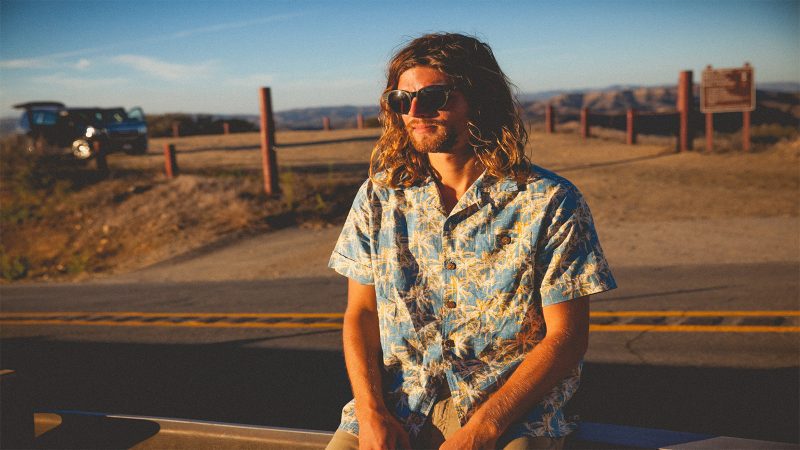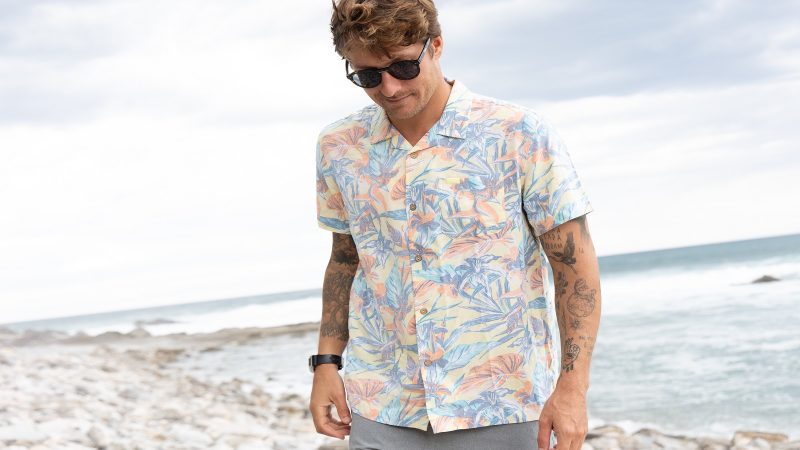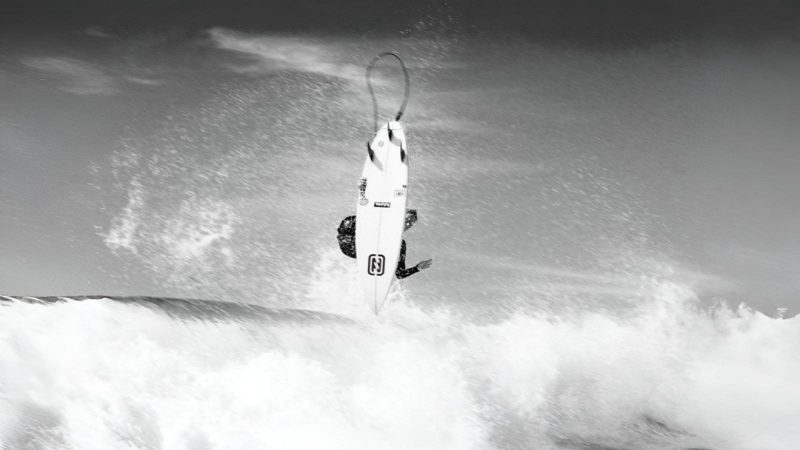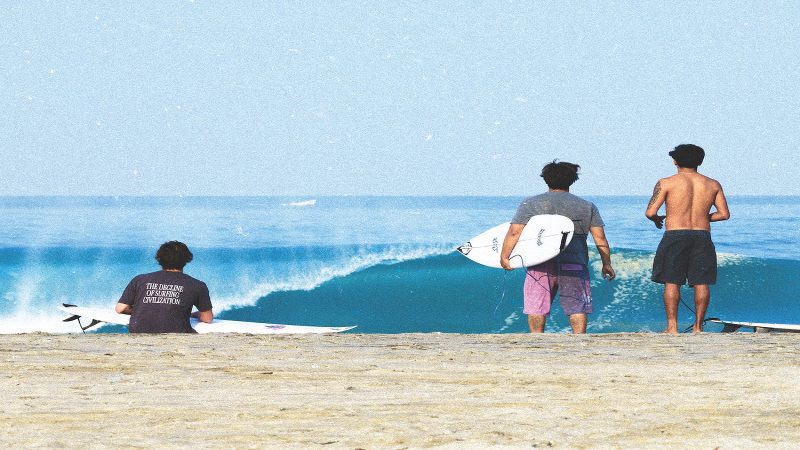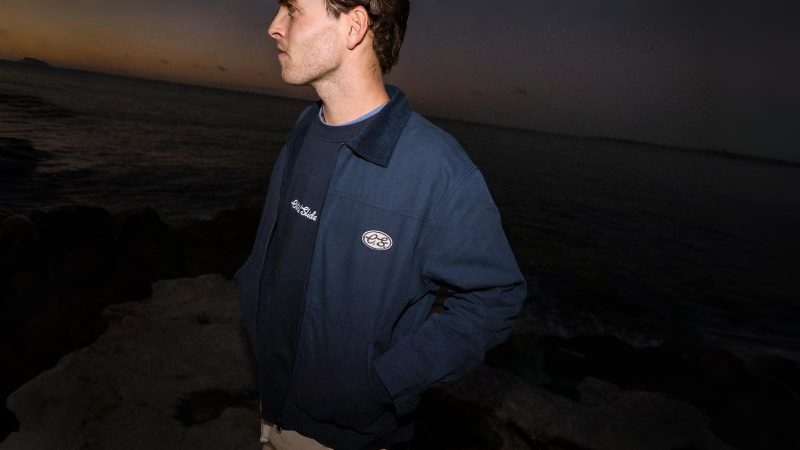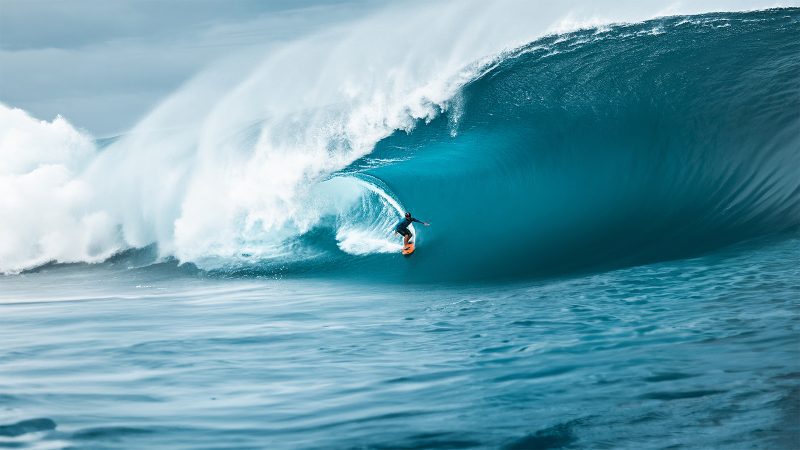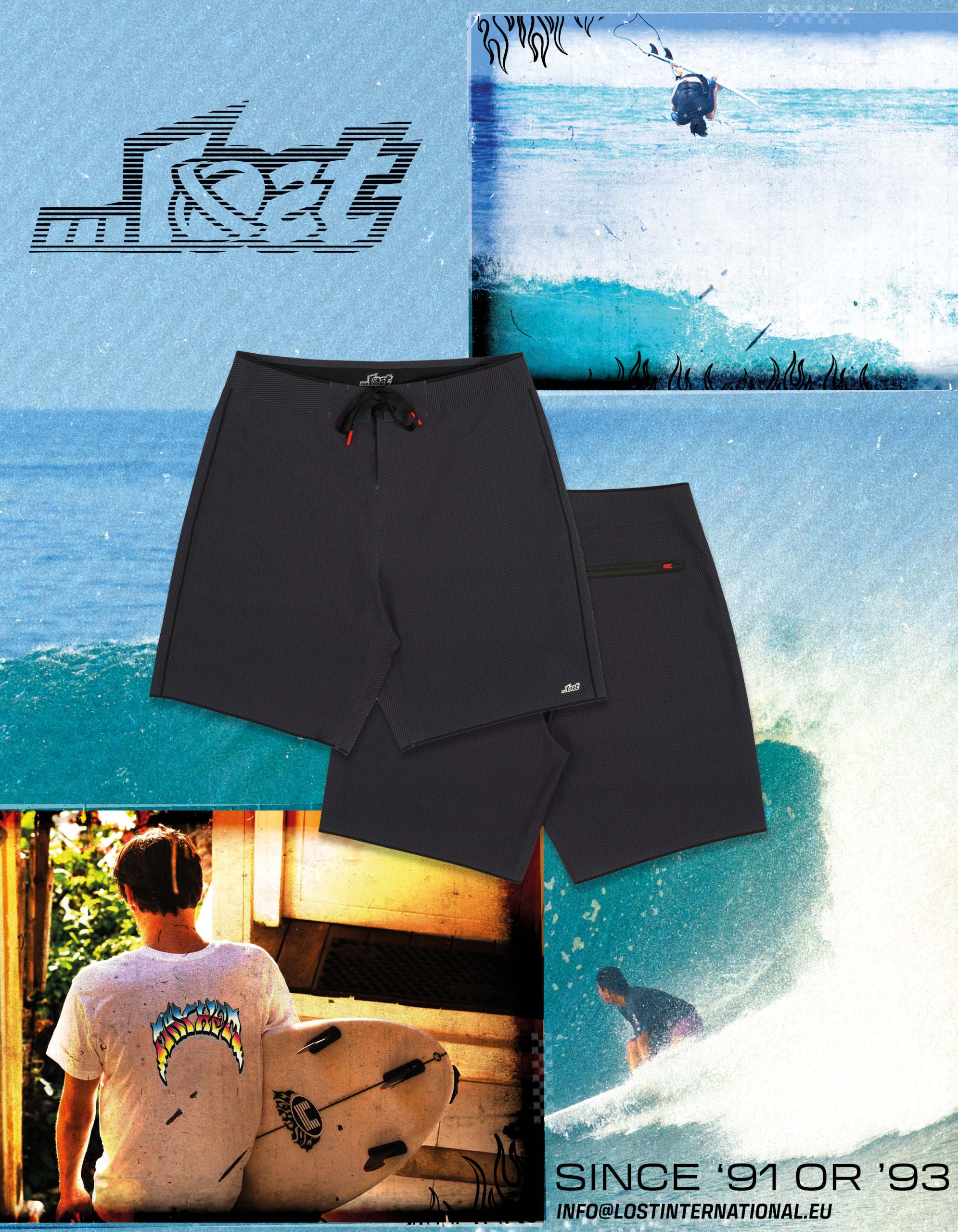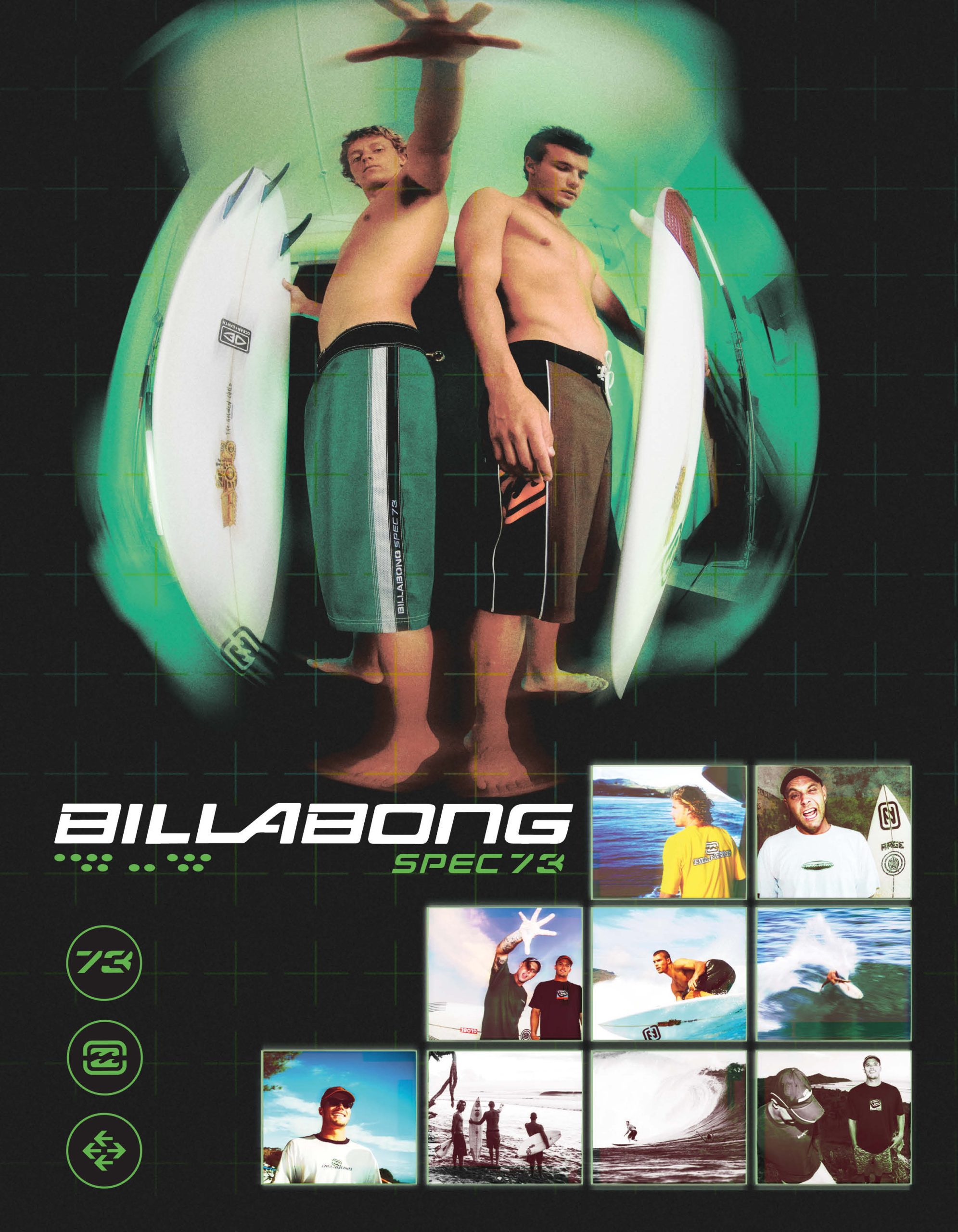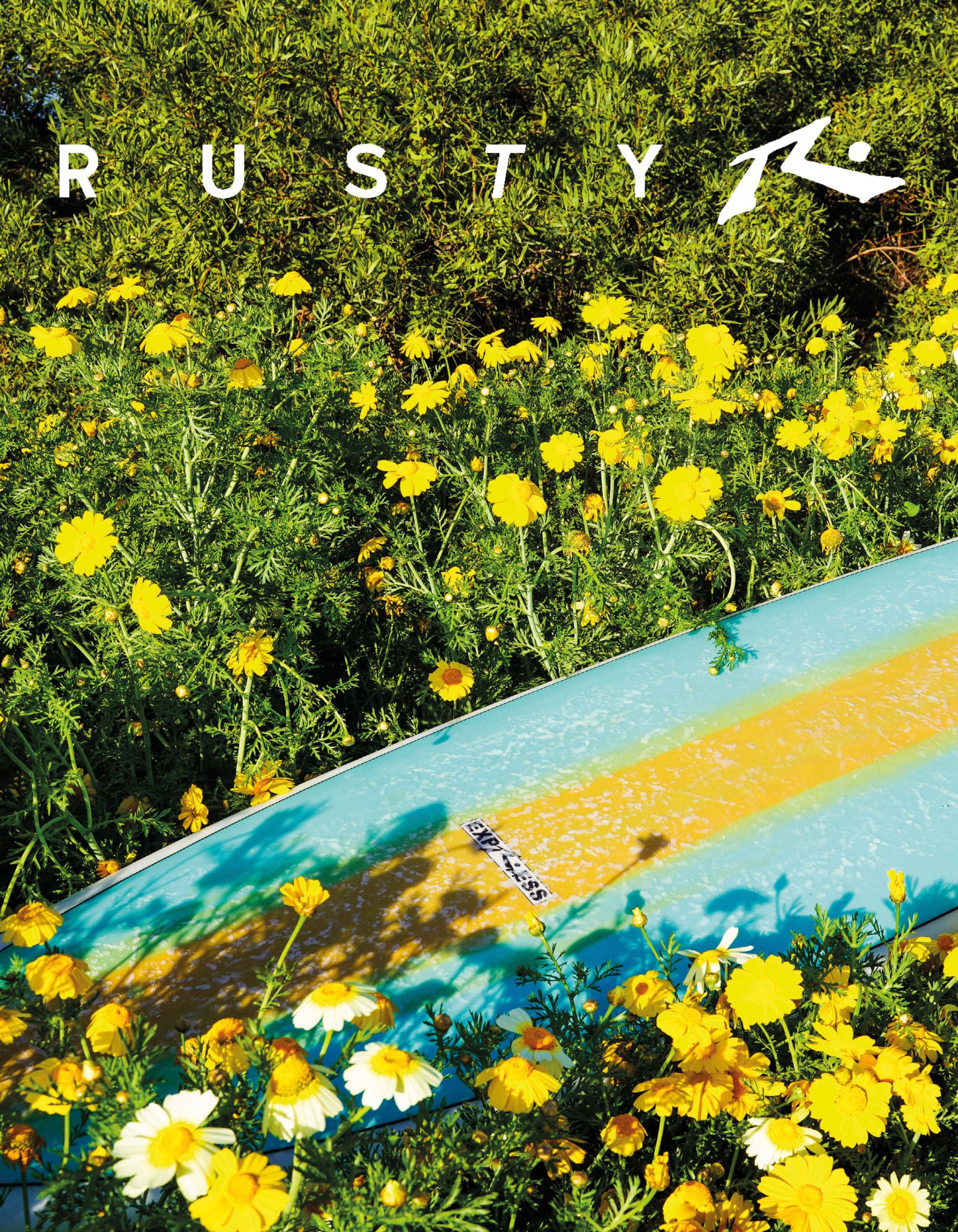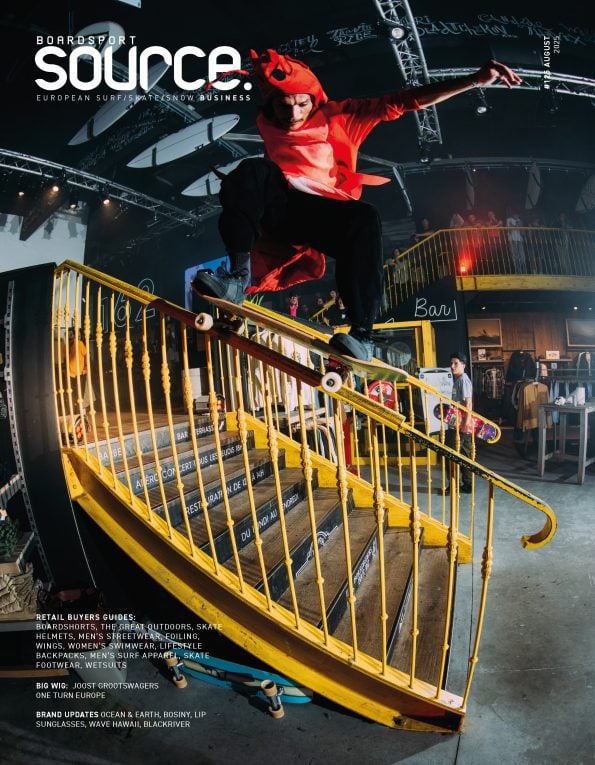Mens Surf Apparel S/S 2026 Retail Buyer’s Guide
In a clothing industry plagued with fast-fashion juggernauts, the surf apparel category can hold its head high, thanks to a fine combination of heritage, durability and vista. The appeal remains strong in SS26 for both the core and mainstream customer bases. By David Bianic
Unlike many other product segments featured, surf apparel does not comprehend a single product category. Unlike wetsuits, surfboards or swimwear, surf apparel covers a wide range of clothing: the plain tee-shirt, pants, sweaters, jackets, walkshorts, etc. So, arguing that surf apparel is doing good or bad, is just reading the bottom-line, all things included. We took a slightly different approach this year, asking the brands which pieces/styles did well in Spring-Summer 25. And the results are very telling. “Contemporary beach lifestyle apparel performed well, particularly heritage-inspired and premium casualwear pieces”, reveals Brianna Moore, Brand Manager for Lightning Bolt, while “overly technical surf-specific apparel experienced a decline in interest”.
At Oxbow, t-shirts remain a flagship category, signing excellent results, but in the meanwhile, fleeces and jackets experienced significant growth, says Manon Jouanine, Men’s Lifestyle Head of Product, while “we saw slightly weaker sales in shorts and short-sleeved shirts”. A weather-induced pattern, due to poor conditions, according to Manon. Rusty confirms the trend for baggy jeans and tees is still well alive, as well as Billabong, which “gained additional sales from the longer/baggier trend on our apparel that fits more in urban environments”, reports Alex Berthonneau, Head of Merchandising. For the brands, those insights on 2025 obviously come way too late to feed the 2026 collection guidelines. So they rely on market analysis, trend reports and… a fair bit of intuition. While weather is unpredictable, Oxbow tried to tackle that issue for SS26 with an increased number of new mid-season products. “These are designed to bridge the gap between winter and summer seasons, allowing retailers to introduce the summer collection earlier in the season”, explains Manon.
On the other hand, the carry-over policy which has been implemented since that Covid thing morphed from a defense strategy to establishing staple collections. Rhythm aptly named it the Classics collection, “composed of pieces that never go out of style”, says Pablo Garay, European Marketing Coordinator, as “these pieces are in our collection from year to year and they always perform”.
Interesting move from Rusty as they opted for few carry overs in favor of a majority of fresh SKUs, yet reducing the SS26 collection “to Best Sellers only as retailers have the opportunity of getting fresh ‘injection orders’ at least 4 times a year outside of the pre-order seasons”, explains Craig Butcher, European Sales and Marketing. It is also worth noting that globalisation does not equal uniformity. In a powerhouse like Billabong, Alex Berthonneau insists on mentioning “the line is now almost exclusively designed in France to suit the needs of the European market”.
SS26 Styles: a hefty heritage
While the surf industry cannot rest on its laurels forever, banking on its glorious past still proves to be a crowd favorite among consumers. Interestingly, the heritage style isn’t appealing to male surfers only, quite the opposite actually, says Pierre-Alexandre Merlet, Men Division Product Manager for Rip Curl: “This trend remains important, especially for reaching a younger audience. It is expected to continue next season, with increasingly looser fits, reminiscent of what we saw in the 2000’s.” Oxbow made it quite explicit, naming one of their key marketing stories ‘Future Memories’ which specifically highlights the design trends of the 90’s and 2000’s. Again, while this is “a journey back in time where we revisit historical pieces”, it is embodied by younger, progressive surfers like Maud LeCar and Miguel Blanco, tying both generations. As Alex at Billabong aptly reminds us, “depending on the consumer profiles, different eras apply”. Curating their 50yrs legacy, they have many heritage eras to offer and for SS26, Alex highlights Billabong’s 80’s re-issue inspired collection, named “Since 73”, with a strong Australian heritage, which “has been collecting a lot of prebookings this season”.
For a brand like Lost, heritage isn’t found in the soul surfing of the 70’s but rather in a noisier era: “We’re using elements from Lost’s past with a modern, surf-punk feel, raw, not nostalgic”, says Jonathan Gilbert, CEO Europe. On a different note, TCSS digs into an era they never actually experienced (founded in 2009) after they “dipped their toe” into the early 00’s: “In all honesty, it sits a little outside of our wheelhouse. We look towards the 50’s through to 80’s as our key surf reference period”, says Sam Coombes, Founder & Head of Creative at The Critical Slide Society.
SS26 Fabrics: comfy with ethics
If heritage styles tell where you come from, the materials shed a light on which future you want for your brand. And yes, fabrics have a lot to tell us. Maybe the more accurate way to describe the trend is found at Lightning Bolt, where the focus is on “conscious comfort”: European-sourced organic cotton, refined hemp blends, and recycled fibers for technical support. In addition to organic cotton, recycled cotton or Repreve (recycled polyester), Oxbow can’t praise enough their use of linen, as seen on their Dart shirt: “[It] is a highly sustainable fiber; it’s derived from the flax plant, which requires significantly less water and fewer pesticides than cotton. It’s also a strong and durable fiber, and biodegradable”, details Manon Jouanine. Even the common tee-shirt isn’t what it used to be, as the grammage has beefed up for a few years now. The message being: the higher the grammage, the more quality, even though some tees might be “too warm” for the heatwaves we experienced during summertime. “The lowest 100% cotton tee shirt grammage will be 160gsm with the majority being at 220gsm”, tells Craig from Rusty, which also separates “the brand from many competitors by keeping the product on the consumers body for longer, and away from waste dumps”, may he add. Their Dead ringer short sleeve tee, featuring bold black sleeve and neck cuffs with matching chest print sits right there in this trend. Smart move from TCSS as they brought in a raw 150gsm ‘tropical weight’ jersey into their tee Spring offering, whilst the heavier 230gsm options remain available.
SS26 Colors & Prints : the Art of Understatement
Heritage with a contemporary twist is the vibe again for Spring-Summer 2026. Silhouettes and cuts take direct inspiration from the 90’s and early 2000’s styles, yet they did not “paint it bold” as was apparel back in those days. Quite the contrary actually. Let’s start with the color palette. “Sun-washed and mineral: faded brights, coastal greens, warm terracottas, and classic neutrals”, it is at Lightning Bolt, or “lots of pastels, various shades of blues, greens, and dusty roses, combined with earthy browns to reinforce the theme”, in Oxbow’s ‘Lost Places’ story. At Protest, the colorway designations are ‘velvet for the ear’: Dark Teal, Tourmaline Blue, Golden Yellow, Plum Mauve, Bali Blue, Thyme Green, Fern Green, Clorofix Lime, Cali Blue, Night Sky Navy, Burnt Peach, Hazelnut Brown, Amber Brown, Bamboo Beige… All these shades are exploring the Midsommar Myth: “Imagine coastal vibes mixed with old-school folklore”.
Prints are even more low-key with vintage stripes, subtle tropicals, and beach-inspired textures (Lightning Bolt), vintage wallpaper and geometric patterns (Oxbow), patterns that mimic waves, sand, and leaves (Protest) or “xerox style sketchy patterns and subtle non camo looking camos that we are bullish on”, teases Cory Higgins, Co-Founder of Jetty. If all of this is too subtle for your liking, look over Lost’s collection, where “graphics are raw, surf-art inspired”. Sure enough, the classic Mayhem logo will find some unexpected traction among Lady Gaga’s fans, since the singer “forged” the graphics for her latest album cover!
Retailers care
“OK, those fine garments of yours are great, dear surf brands. But what makes my brick & mortar shop more attractive than your e-shop?” As always brands keep a few tricks up their sleeve to enhance the in-store customer experience. It starts with the usual: “Storytelling-rich POS materials, curated seasonal lookbooks, versatile digital assets for in-store and online use, and flexible merchandising strategies”, details Brianna at Lightning Bolt. Oxbow also provides education tools for the retail staff like their Tradebook, “that outlines the season’s marketing stories and product stories”, through “in-depth product descriptions, imagery, and fit guides, enabling sales staff to confidently present our products to customers”, says Manon. To make the retailers feel even more special, Jetty reserves retailer exclusive colors and styles, in store events, “and finally a few custom fixture displays hitting the market”. Let’s not forget the incentives for customer loyalty, like Rhythm gifts for purchases. As per the Trump Tariffs threat hanging over our heads, most (non US-based) brands minimise the direct impact on our industry, “however we recognise that changes in trade policies can have ripple effects across the global market, potentially influencing consumer confidence and overall economic conditions in Europe”, adds Manon from Oxbow.













